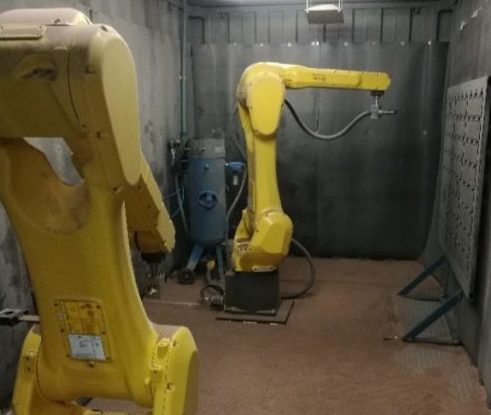Located in Victoria, Brenco Surface Engineering is a global provider of surface coating and engineering processes. Their Aerospace division provides sustainment for defence and commercial aircraft operations including coatings for engine, undercarriage and structural components, produces solid oxide fuel cell (SOFC) coatings for power generation. Their Surface Engineering divisions deliver the same engineering and coating expertise to the mining and mineral processing, drilling and exploration and oil & gas and general processing industry.
THE NEED FOR AUTOMATION
Until this year, blasting procedures at Brenco were performed manually, requiring operators to be inside of a blast facility wearing full body protection year-round. This is an arduous task, especially during the warmer months. Brenco looked to Automated Solutions Australia for an automated blasting solution that removes manual operators from the harsh environment, as well as increasing their manufacturing throughput. Under the automation plan, the operators were to be redeployed within other areas of their facility.
ROBOT MODEL DETERMINATION
Through close consultation with the customer and a Needs Analysis, ASA was able to determine that the most suitable robot for this application was IP67 rated M20iB/25 FANUC robot (2 of). This style of robot was ideal, as they have no flat surfaces for grit to accumulate on, eliminates concerns of grit building up which may result in long term problems with grit seeping into the joints.
After initially designing the cell to fit within an existing brick blast-room at Brenco, a change in approach meant the cell was designed within a shipping container. This design allowed the relocatable blast chamber to be converted into an automated shot blasting cell. To support this change in use, reinforcing was added to the sub floor, as well as rubber panels along the length of the walls. Utilities were also added in the form of lighting, cabling, interlocks and all other things required to make the cell safe.
The robot cell utilises an Allen-Bradley Programmable Logic Controller (PLC) to provide communications between the cell I/O, the robots and the Human Machine Interface (HMI) panel. A Safety PLC was used to control and monitor the safety devices within the cell including door interlocks, emergency stops, and the robot emergency stop circuitry. The cell controller consists of a HMI screen to display robot and field I/O status, along with required start-up parameters and timing information about the previous blast cycle. This allows the operator to control the process with ease and to troubleshoot problems in the event they occur.
The robots are programmed in a way which allows the operators to have maximum flexibility and control over all the blasting parameters. They can adjust the speed of the robot during the blasting, the amount of overlap between each stroke, the angle at which the blasting occurs, the target distance to the parts, and the height and width of the fixture by simply entering their preferred process parameters.
BENEFITS TO THE CUSTOMER
The end result is that Brenco has seen an increased throughput in processing parts, and in the process gained adaptability in the cell to program in new fixture sizes for different blasting applications with limited internal robot expertise labour required to blast products while freeing workers up to add value in other parts of the process. Workers have also been removed from the noisy, and often uncomfortable, blasting environment.
Heath Browne from Brenco commented,
“Dealing with ASA was a very easy and comfortable process. From the various site visits to understand our requirement and processes, to the simulation and modelling to ensure the concept would deliver in terms of productivity and efficiency and the equipment selections. I was always confident in a successful outcome. Several months since the commissioning of the blasting cell I am happy to say that our expectations have been exceeded and our output and overall quality of product has increased dramatically.”
Send an enquiry:
Click an Application to Explore Further:
FANUC Robots Australia | Paint Robots for Surface Finishing | Welding Robots by FANUC | Machine Tool Tending Robots | Fibreglass and Gelcoat Robots | Palletising Robots | Robotic Vision Inspection Systems | Plastics Painting | Deburring and Polishing | Sealing and Dispensing | Picking and Packaging | Material Removal Robots | Shot Blasting and Peening |
More (Recent) News Stories from Automation Solutions Australia:
Deburring Machines | Robots a Historical Overview | Robotics Engineering | Automatic Paint | Robotic Loading Systems for CNC | Unlocking Your Manufacturing Potential | Spray Painting Robots | Automatic Sandblasting | CNC Mills | Automated Welding | Unlock the Future with Automation Systems | Robot Company, The Automation Era | Choosing an Automation Company | Harness the Power of Robotics with ASA | Robotic Painting | Automotive Welding | The Path to Machine Tool Automation | System Integrator Australia | Robotic Welders | Automate your CNC | Automation Company | Electrical Design | Human Machine Interface | Plastic Paint Robots | PLC Programming | Robotics Australia | Solutions | Industrial/Manufacturing Robots | Industrial Engineering | FANUC Robot | Shot Blasting | Robotic Automation Solutions | Industrial Automation | FANUC Industrial Robots | FANUC Collaborative Robots | FANUC Palletising Robots | Robotic Palletisers | Robotic Fibreglass Spray Machines | CNC Machine Automation | Robotic Arm – An Industry Guide | The Cobot | Automation Robotics | Custom Automation Solutions | Assembly Robots | Automate your Paint Booth | Ceramic Coating – Cerakote | Automotive Automation | Pick and Place Robots | Understanding Industrial Automation | PLC Automation | Arc V Spot Welding | What is Cerakote? | CNC Machines Australia | What is a Robotic Cell | Robotics Systems with ASA | What is ARC Welding? |PLC Controls | Collaborative Robots – What are they? | Welding Automation |



